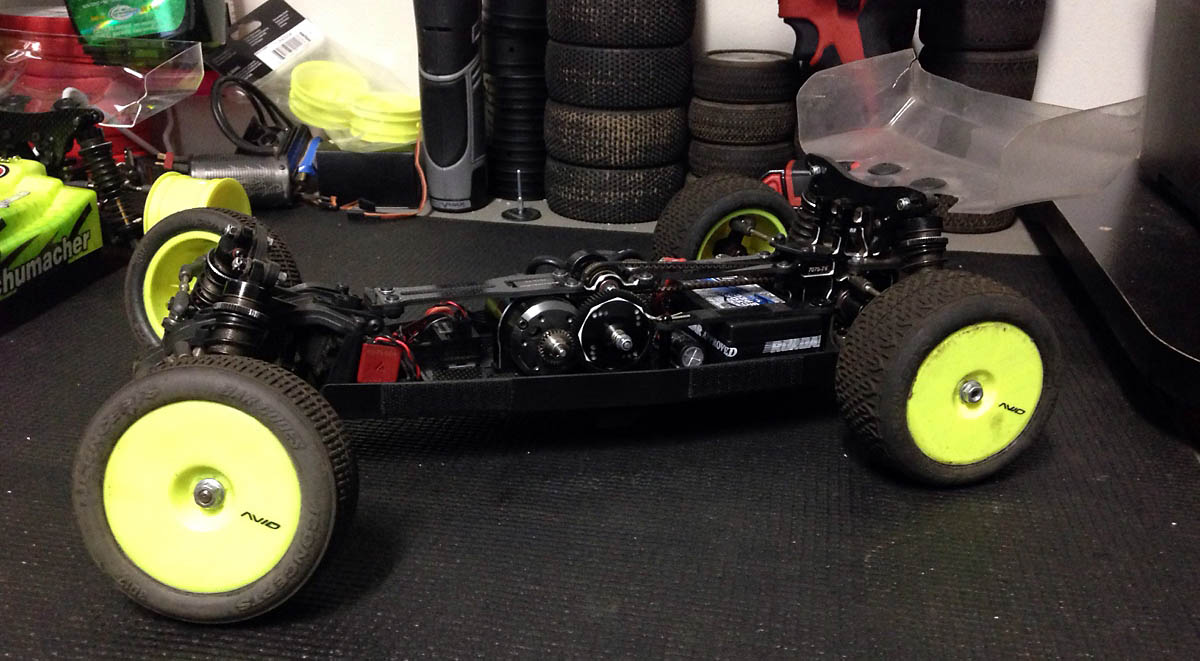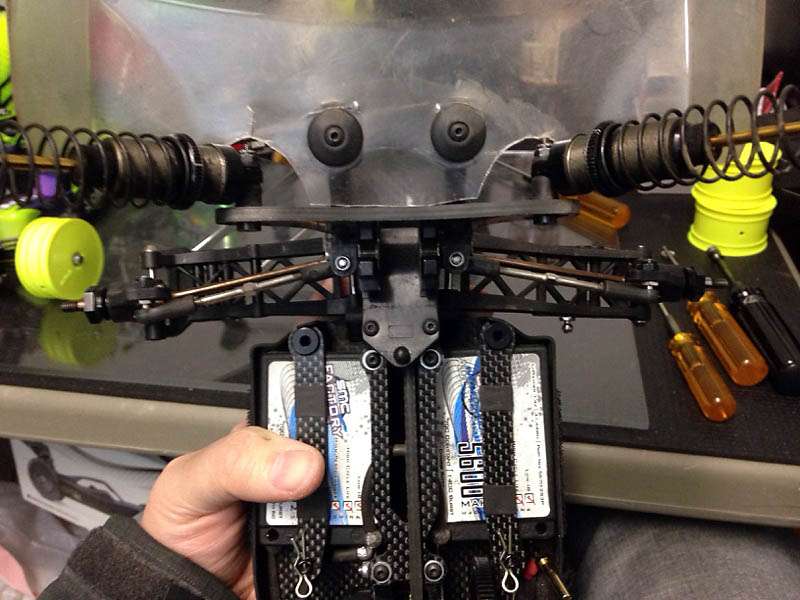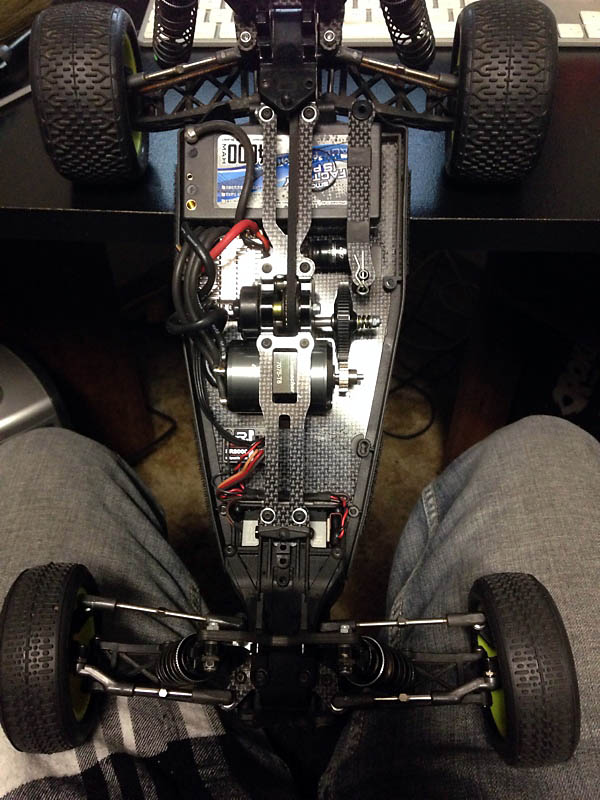Schumacherís newest 2wd buggy, the Cougar KF, is a high bite all-star. But what happens when you want to run this car on different surfaces? Fear not! The team has been testing and collaborating all kinds of different setup options to help make this car a beast on the dirt as well.

Truly a mid motor!
THE SUMMARY
What I found is that this car is a beast in the corners. My corner speed is incredible, especially when compared to rear motor (RM) cars. The problem that I had was when I was behind a RM in a corner. If I had to choke up on them, it was difficult to power out of the corner if the traction was low to medium bite.
The two primary option parts I found to have the biggest impact on the rear traction were the following:
- Schumacher Alloy Mount Rear Upper Transmission (U4171)
- Schumacher Shorty LiPo Conversion Set (U4456)
1.) U4171 Ė Alloy Mount Rear Upper Transmission
When I first started running the KF, I compared its stance to other mid-motor cars at my track. The main thing I noticed was that the rear shocks were mounted on the front of the rear arm, whereas the Centros, Losis, and XFactory cars were on the rear. This helps move weight behind the rear wheels and aids with weight transfer to the rear.
What U4171 allows you to do is mount the KF shocks on the back of the arms. The parts come with optional screws to help relocate the shocks, but donít install those quite yet.
2.) Reverse the Rear Arms
When trying to make rear tractions (under acceleration), most of the time youíll be advised to shorten the wheelbase. I tried short, medium, and long and found this to be true. The short wheelbase added the most traction, but did feel like more would help.
Reversing the rear arms does just that. Here is where you will want to use the standard shock standoffs on the rear of the car. If you used the parts that came with U4171 to mount the shocks on the back of the arm, you will find that the shock angle creates a bind when completely mounted. The standard mounts keep the angle nice and vertical, keeping the shock action smooth.

(Left) SV2 Arms, (Right) Reversed KF Arms
Another option would be to use the SV2 rear arms (as seen on Tom Cockerillís Motorama setup). Please note that in order to do this configuration, you will need to purchase SV2 arms (U4055),32mmPivot Pins (U3716), and 2.4mm Quick Clips (U3708).
3.) U4456 Ė Shorty LiPo Conversion Set
This is where the brilliance of Schumacherís design and engineering team comes in. When I installed the shorty conversion, the weight bias between front and rear remained the same as the saddle pack setup. The car was lighter overall, which will help with jumping. With a little modification though, you can mount the ESC behind the motor, helping the weight bias out for lower traction surfaces.

U4171 With ESC Behind Motor
The Science
If you donít care why this all helps, you can skip over this section. If you want to know why this helps, read onÖ
The key to making rear traction is weight transfer, and the more weight you can transfer to the back the better. I donít mean dropping a bunch of sticky weights on either, the act of the transfer. Many factors contribute to the weight transfer. Things like anti-squat, wheelbase, shocks, etc all have an impact on weight transfer.
Before the shorty conversion, I scaled my car to get the weight bias. With the saddle pack, the KF came in at 40.5% front, 59.5% rear. When I installed the shorty pack conversion, leaving the rest of the car the same as the original saddle setup, the KF scaled in the exact same (40.5/59.5), but was lighter overall.
I then took ESC and mounted it behind the motor. The car scaled in at 38% front, 62% rear. So what, right? Well at the last club race, I asked some very fast friends of mine if I could scale their mid motor cars. Up first was the X-Factory X6 Cubed. On the scale, the car came in at 35% front, 65% rear. Next was a Team Associated B4.2 with the Centro conversion. The Centro came in at 36% front, 64% rear. These guys were not having an issue putting the power down on the surface.
So now the KF is close to what the other mid motors are, and this helps with lower bite surfaces. With more weight being on the rear to start, the higher the weight transfer will be and more rear traction will be had.
The Conclusion
Letís face it, this car looks cool and is very unique to the competition. Itís simply not designed for the surfaces that come with typical dirt tracks. Schumacher even advertises the car as ďdesigned especially for high traction carpet and astro circuits.Ē But if youíre like me and want a unique car for the dirt, the options above will help you out.
In the coming weeks, I will write a follow up to this with some of the other option parts that I have been using. I wanted to focus on these two initially which I think help the most.
